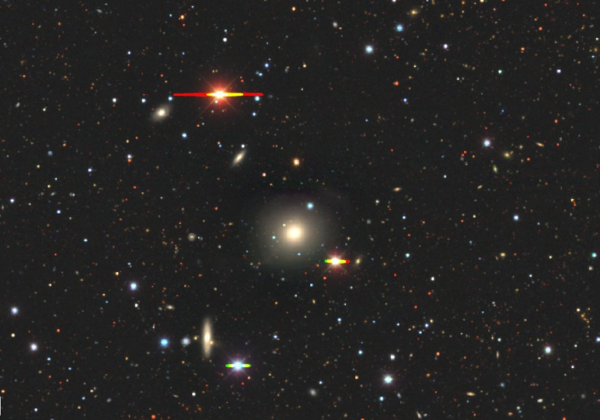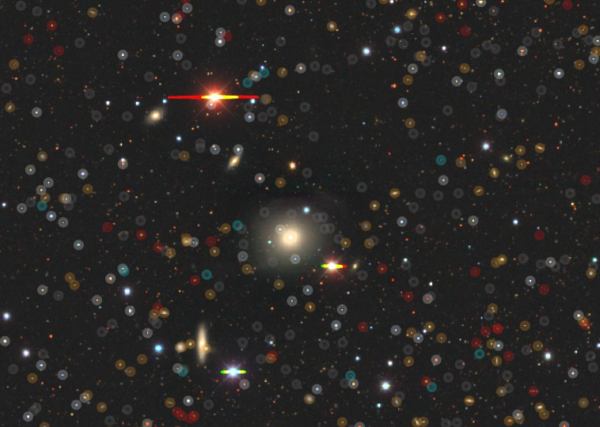Adam Myers, University of Wyoming
November 4, 2020
The Dark Energy Spectroscopic Instrument will conduct spectroscopy of truly vast numbers of cosmological and astrophysical sources. These include Bright Galaxies, Emission Line Galaxies (ELGs), Luminous Red Galaxies (LRGs), Quasars, and objects in our own Milky Way Galaxy. DESI spectra are obtained by aligning optical fibers with locations on the sky, to collect light to be analyzed by dedicated spectrographs. But, how do DESI scientists know where to place those optical fibers in the first place?
Sources for the DESI key projects are targeted using images of the sky from the DESI Legacy Imaging Surveys. The Legacy Surveys include optical photometry from dedicated campaigns with the Mayall and Bok telescopes at Kitt Peak National Observatory, near Tucson, and the Blanco telescope at Cerro Tololo Inter-American Observatory near La Serena in Chile. The Legacy Surveys also incorporate infrared imaging from the WISE and NEOWISE missions, and source detections from the Gaia survey.
When envisioning the process of finding distinct objects in the sky, it is tempting to picture a bright, extended galaxy, such as this one:

But, in truth, the vast majority of DESI targets are far less spectacular to the eye, and are selected based on properties such as their color in addition to their shape. Below is the same image from the Legacy Survey Viewer above with the targets identified with circles. You’ll see that there are many more DESI targets in this field than you might have naively expected!

To determine which of the one-and-a-half-billion or so sources in the Legacy Surveys will be the lucky few tens-of-millions targeted by DESI requires sophisticated computer algorithms to sift through sources and target objects with specific photometric properties. The publicly available software that DESI uses, which is called desitarget, comprises tens-of-thousands of lines of code and has received contributions from dozens of DESI scientists.
The DESI collaboration recently released a series of research notes detailing the currently expected targeting algorithms for the DESI five-year survey:
- Bright Galaxies (Ruiz-Macias et al.)
- Luminous Red Galaxies (Zhou et al.)
- Emission Line Galaxies (Raichoor et al.)
- Quasars (Yèche et al.)
- Milky Way Sources (Allende Prieto et al.)
The target catalogs that correspond to these notes, which are drawn from Data Release 8 of the DESI Legacy Imaging Surveys, are publicly available here in a format described here.
Although it is a significant milestone to have the first official DESI target catalogs in-hand, the dedicated effort of the collaboration continues. The next data release of the Legacy Surveys (Data Release 9) will soon be used to optimize, refine and finalize the target catalogs for the DESI five-year survey, during a phase of the project known as Survey Validation.